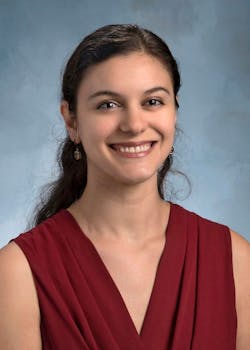Smoothing The Sun: Ultracapacitors On UC San Diego’s Microgrid
Maxwell Technologies’ Jessica Baris explores the ins and outs of the innovative ultracapacitors on UC San Diego’s microgrid and how the energy storage system works.
For a smattering of days this year, Mike Wilk’s office space was a grove of eucalyptus trees on UC San Diego’s coastal campus.
Wilk, a senior systems engineer at Maxwell Technologies, is part of the team that installed the first ultracapacitor energy storage system on UC San Diego’s microgrid. Maxwell’s system, an inconspicuous 20-foot container filled with ultracapacitor modules, supports the solar panels that capture and feed energy to the adjacent La Jolla Playhouse Theater.
Batteries traditionally play the energy storage role. The goal of the Maxwell ultracapacitor bank installation was to see if ultracapacitors can provide a more cost-effective energy storage system for microgrids—and better response time—than batteries.
“The more renewables you put on the grid, the more unstable the grid gets,” Wilk said. “Every time a cloud comes by, there are dips in the solar power. Maxwell’s system monitors these changes, and our ultracapacitors react to the dips in power output. Ultracapacitors achieve solar smoothing, which means they smooth out the peaks and valleys of the power output by being the energy source that fills in the gaps.”
During cloud cover, there is a sharp decrease in power, and this is when the ultracapacitor modules are discharged, adding power to the microgrid. When the solar power is increasing, the ultracapacitors are charged.
“When those two outputs work together, you end up with a much smoother, higher quality power output,” Wilk said.
Shaw Lynds, manager, systems technology at Maxwell Technologies, completed the simulation model for the ultracapacitor bank and worked closely with the team at UC San Diego to bring the project to fruition. Lynds said Maxwell’s ultracapacitor bank has been fully operational since April 2016 and has proven to be a strong contender for the role of solar smoothing in the microgrid.
Mike Wilk, a senior systems engineer at Maxwell Technologies, is part of the team that installed the first ultracapacitor energy storage system on UC San Diego’s microgrid. (Photo: Maxwell Technologies.)
“UCSD provided a convenient platform where we could remotely monitor this small-scale system before scaling up the technology for much larger projects,” said Lynds. “In industrial solar on large branch lines—like the lines at Anza-Borrego Desert—power quality issues turn into brownouts. The fact that ultracapacitors have shown to be effective for solar smoothing at the 30 kW system size in UCSD’s microgrid is indicative that this is a viable technology for the grid at large. Ultracapacitors can have a significant impact in terms of cost-savings and energy-efficiency.”
You can tour the University of San Diego’s Microgrid as part of the Microgrid 2019 conference on May 14 -16 – click here to learn more.
UC San Diego’s microgrid is one of the most advanced in the United States, generating 92 percent of the electricity used on campus and saving more than $8 million each year when compared to the cost of imported energy. The project with Maxwell has paved the way for ultracapacitors to expand energy storage in the grid.
“What we’ve shown is that you can stabilize a microgrid with only about one minute worth of ultracapacitor energy storage, which is why ultracapacitors can be competitive in this market,” Lynds said. “Traditionally, microgrids require multiple hours of backup with batteries to achieve the same goal.”
Lynds added that if a microgrid has no energy storage system, it is limited to less than 20 percent of renewables as a resource.
“The rest of the energy would have to be produced from diesel generators, coal, turbines, and the like,” he said. “To run a microgrid that’s mostly renewables, it comes down to how much energy storage you install to get it to run as efficiently as possible. Ultracapacitors have shown to be very promising for future resiliency of the grid.”
This post originally ran on the Maxwell Technologies blog, MAXPower Weekly.
